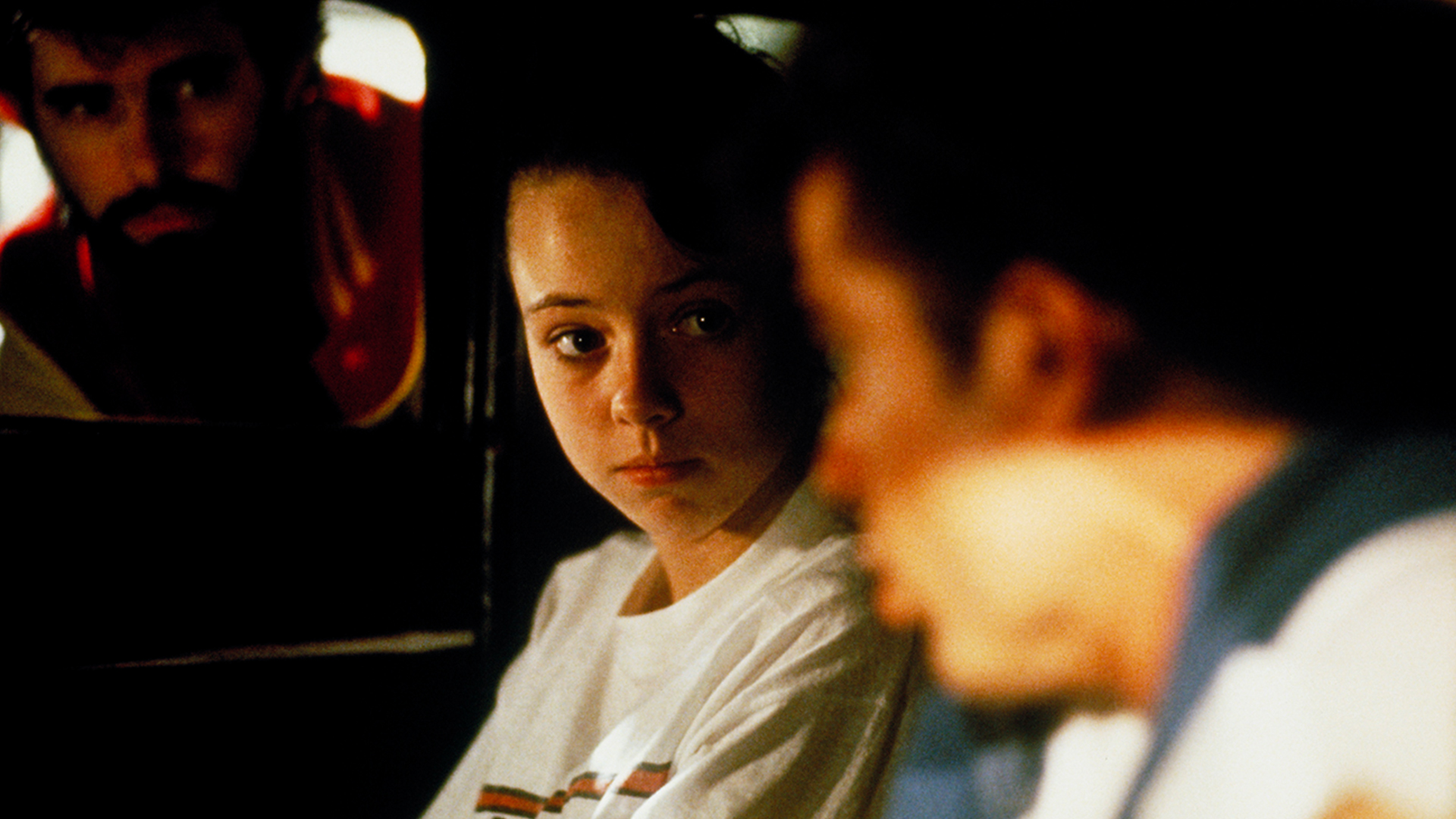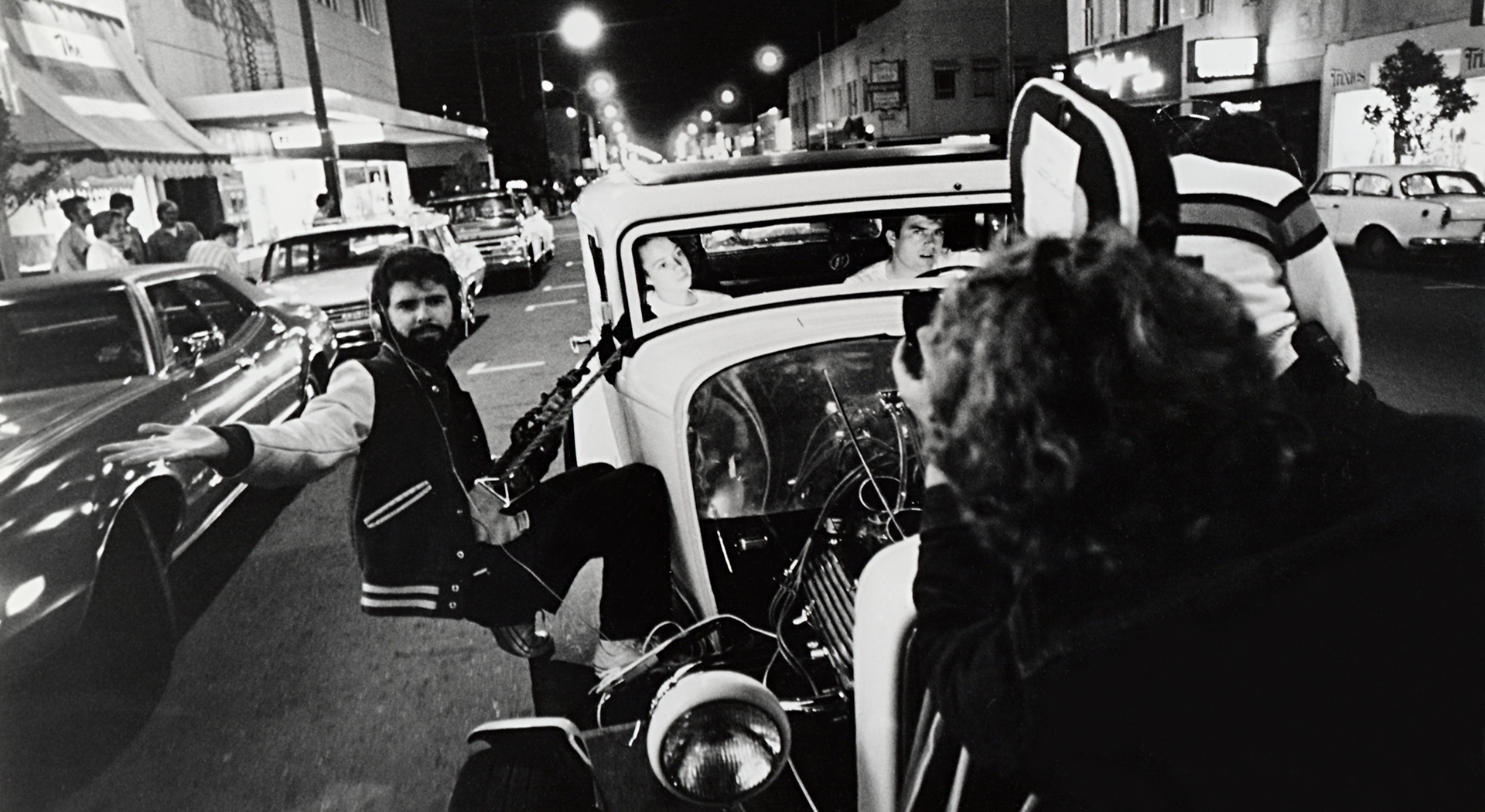50 Years Ago: American Graffiti Begins Filming
Lucasfilm’s First Production Faced Adversity from the Outset
In the summer of 1972, Lucasfilm was barely a year old and still without an actual film to its name. Its founder George Lucas had directed his debut feature, THX 1138, for American Zoetrope and Warner Brothers the year before, but left the experience disappointed. Now, he was striking out on his own by writing and directing a new feature, one that was warm, funny, and full of the rock and roll music and fast cars of his teenage years.
Success was anything but guaranteed. With the help of his friend Francis Ford Coppola, Lucas had managed to convince Universal to fund his new movie with a strange title, American Graffiti. On a tight budget of some $700,000 (less than he’d received for THX), Lucas and a small cast and crew would make the film entirely in the San Francisco Bay Area. With the story set over a single evening, nearly every workday would in fact take place at night (Lucas would spend as much of the intervening days as he could trying to edit the picture as he went).
In partnership with producer Gary Kurtz, Lucas had spent months developing the screenplay with the help of his friends Gloria Katz and Willard Huyck; as many months casting a group of mostly young and inexperienced actors; and weeks more locating dozens of cars from the period of the early 1960s, which though only a decade earlier, seemed a lifetime ago. He planned to shoot the film as he had THX, using mostly existing lighting on location with a crew of documentary camera operators.
The first evening of the shoot arrived on Monday, June 26 along a crowded 4th Street in San Rafael, California. They covered some ten setups with actors Paul Le Mat as the aging hot rodder John Milner and Mackenzie Phillips as the gregarious 13-year-old Carol who is surprisingly wise beyond her years. Together, the unlikely pair cruise the streets in an eye-catching yellow 1932 Ford known as a Deuce Coupe.
Though some progress was made, crisis struck when the city of San Rafael decided to revoke its permission to continue filming on its streets, leaving the Lucasfilm crew stranded without a location. They hastily managed to negotiate with a replacement city, the smaller Petaluma further north in Sonoma County. There, the Graffiti crew finished the remainder of that first week, mostly filming additional scenes with John and Carol, including their meeting with a rival driver named Bob Falfa, played by a sometime carpenter named Harrison Ford.
More problems harassed Lucas as he attempted to gather the material for his story, chief among them concerning the cinematography. It was increasingly difficult to capture the images in the dimly lit streets of Petaluma and with 16mm cameras to boot. The director finally appealed to his friend and mentor Haskell Wexler, a filmmaker himself and director of photography. He agreed to consult on the film in order to help realize Lucas’ vision for a “jukebox” on screen, a task that required him to commute daily between the Bay Area and Los Angeles.
Over the next intrepid six weeks, the Lucasfilm cast and crew endured the night shoots in what was often chilly summertime weather. In the months that followed, George Lucas and the editorial team hastened to finish the movie, only to have it seized by Universal, edited down without Lucas’ input, and delayed a release for months. But when it finally arrived in August of 1973, the American audience gave it one of the warmest receptions anyone could remember.
American Graffiti became one of the most profitable films in history, jump-starting Lucasfilm’s growth as a company and funding the purchase of its first headquarters in San Anselmo, California. Lucas himself received many heartfelt responses to the story of youthful aspiration. He took them to heart as he pondered his next project, a similar tale of young people breaking out of their surroundings, only this one took Lucas’ imagination to a whole new galaxy.



